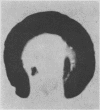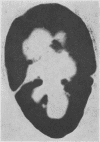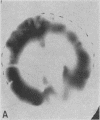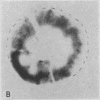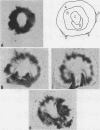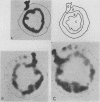Abstract
Serial measurements of intrarenal distribution of blood flow have been recorded in anesthetized dogs with the 133xenon “washout” technique. The results showed that normal kidneys redistributed their blood flow after laparotomy and mobilization of the kidney. This alteration consisted of a diminution in percentage of total renal blood flow supplied to the fastest flowing component, and a diminution of renal mass supplied by that component. This effect lasted for as long as 7 days. Thereafter, the blood flow distribution remained stable.
Autotransplanted kidneys had a stable distribution of blood flow between 0 and 77 days after operation, the values being identical with the stable normal kidney. Homotransplanted kidneys had the same intrarenal distribution of blood flow after operation as the autotransplanted kidneys. Whereas the intrarenal distribution of blood flow of the autotransplanted kidneys remained stable, a redistribution occurred in the homotransplanted kidneys as rejection progressed. This phenomenon occurred before marked elevation of blood urea nitrogen.
The redistribution was due to a decrease in percentage of blood flow supplied to the fastest flowing component, and a relative reduction of tissue mass perfused by this component.
Radioautography of the kidneys before rejection demonstrated that the cortex was homogeneously perfused by the fastest flowing component of blood flow. As rejection progressed, a reduced area of cortex was perfused by this component. Terminally, the fastest flowing component was located in the outer medulla.
It is suggested that the reduction in cortical blood flow produced by immunological mechanisms may play a prominent role in the ensuing renal failure.
Full text
PDF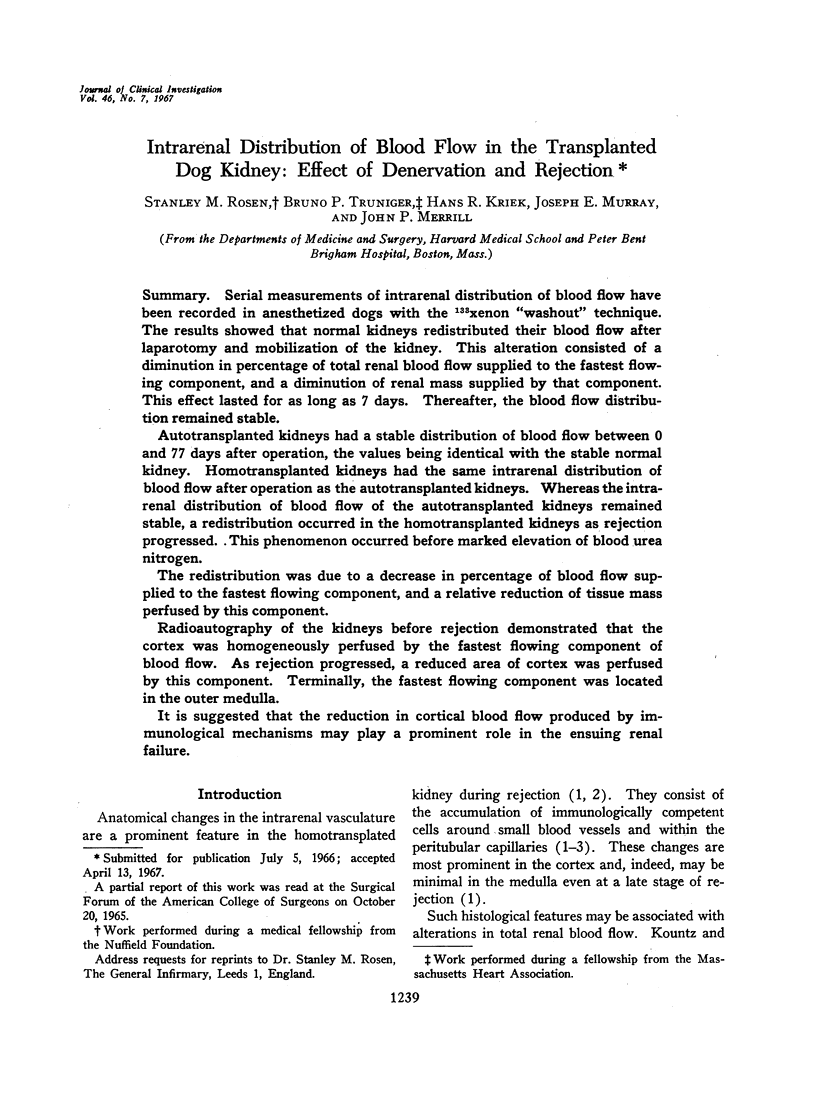
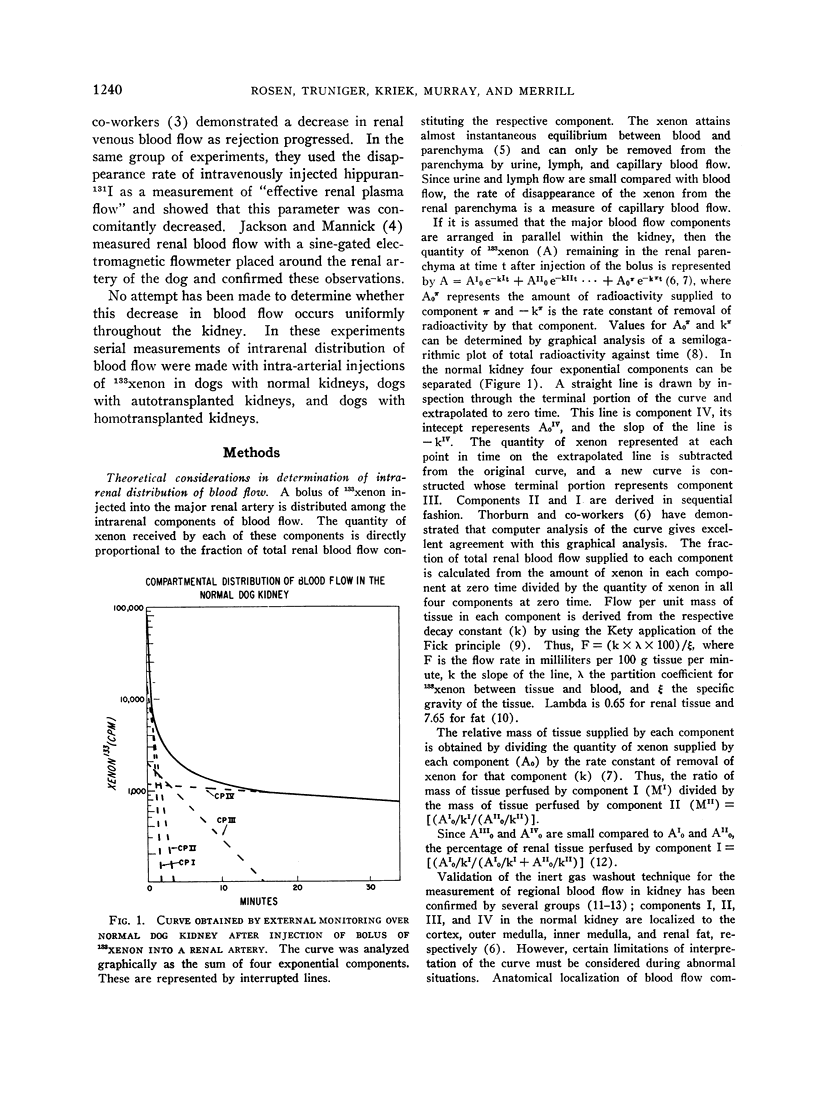
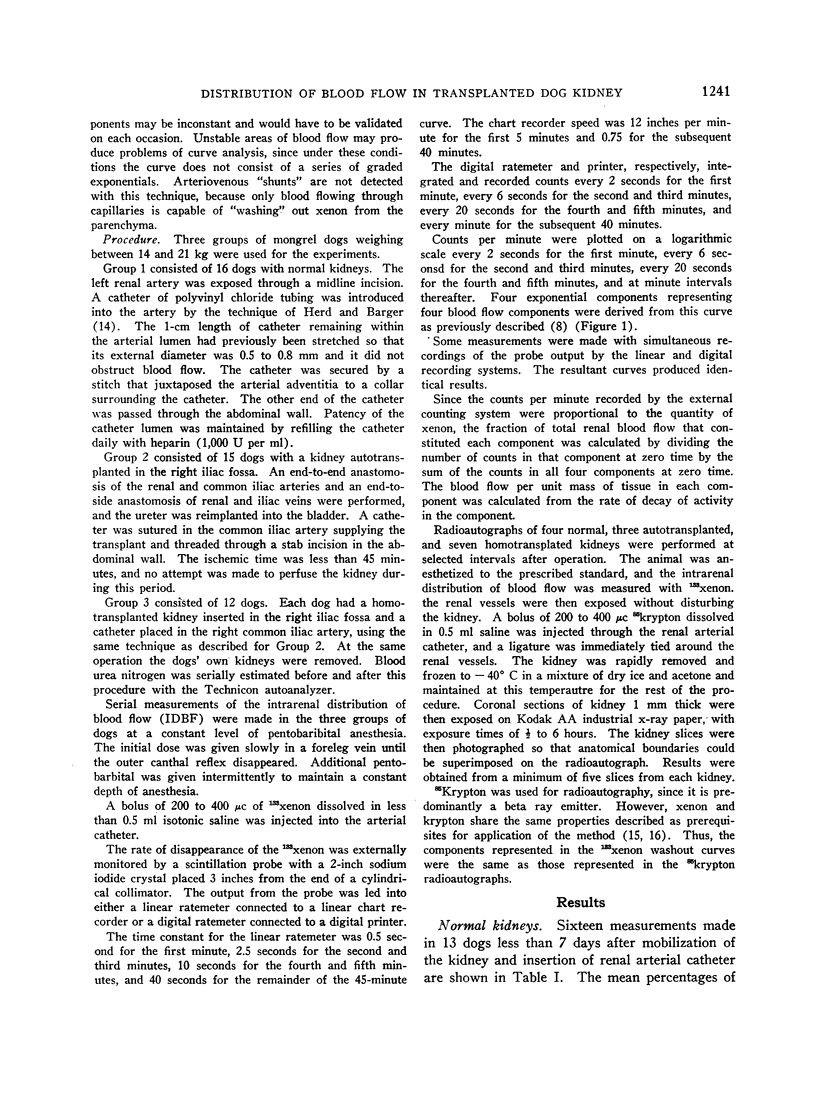
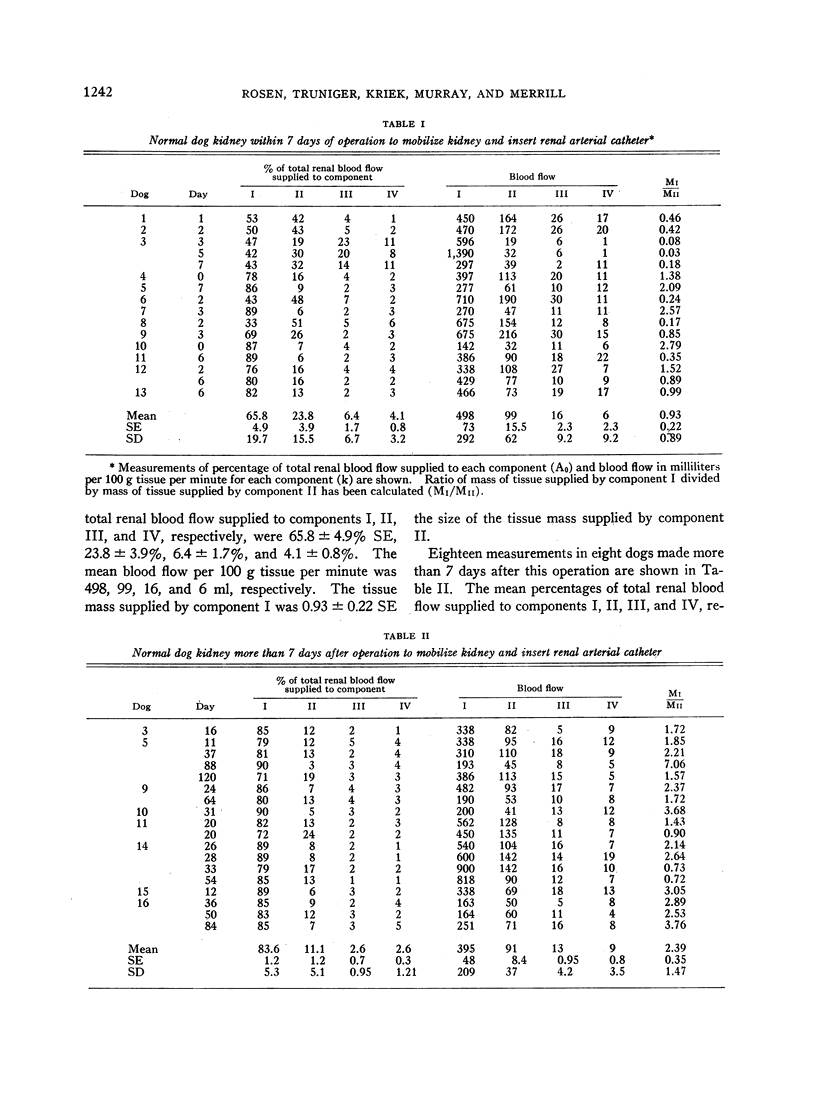
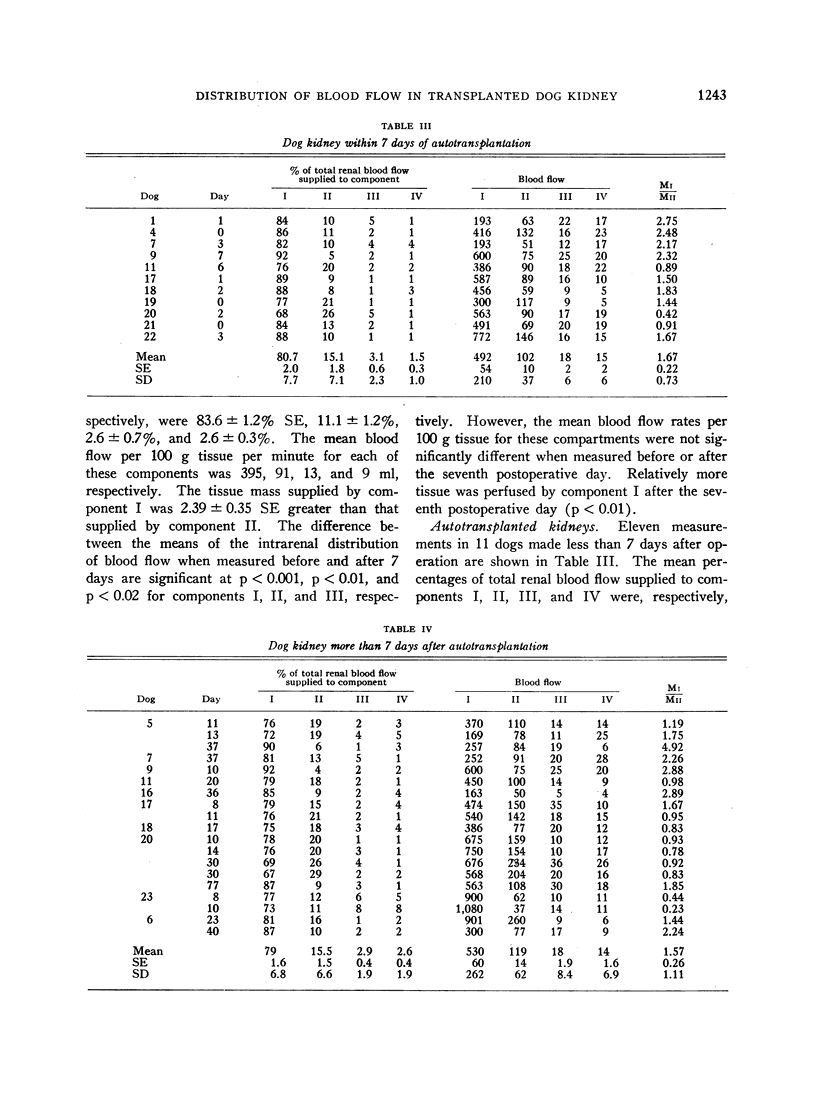
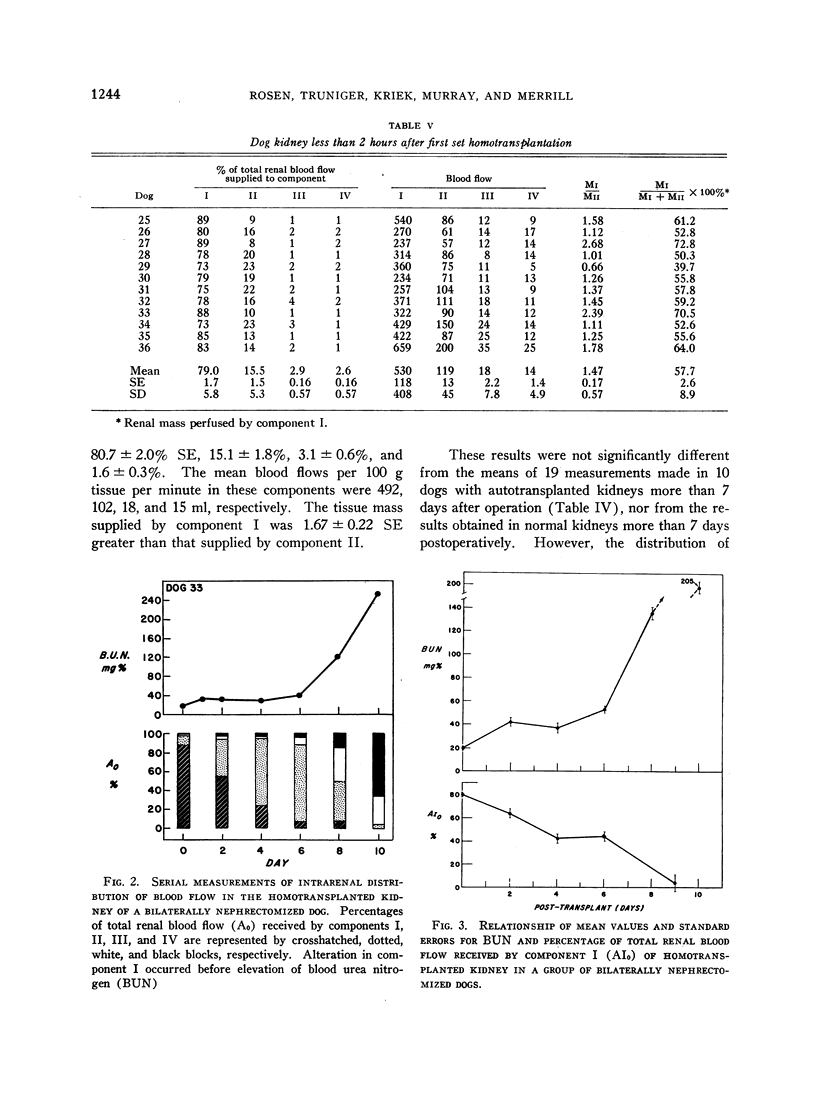
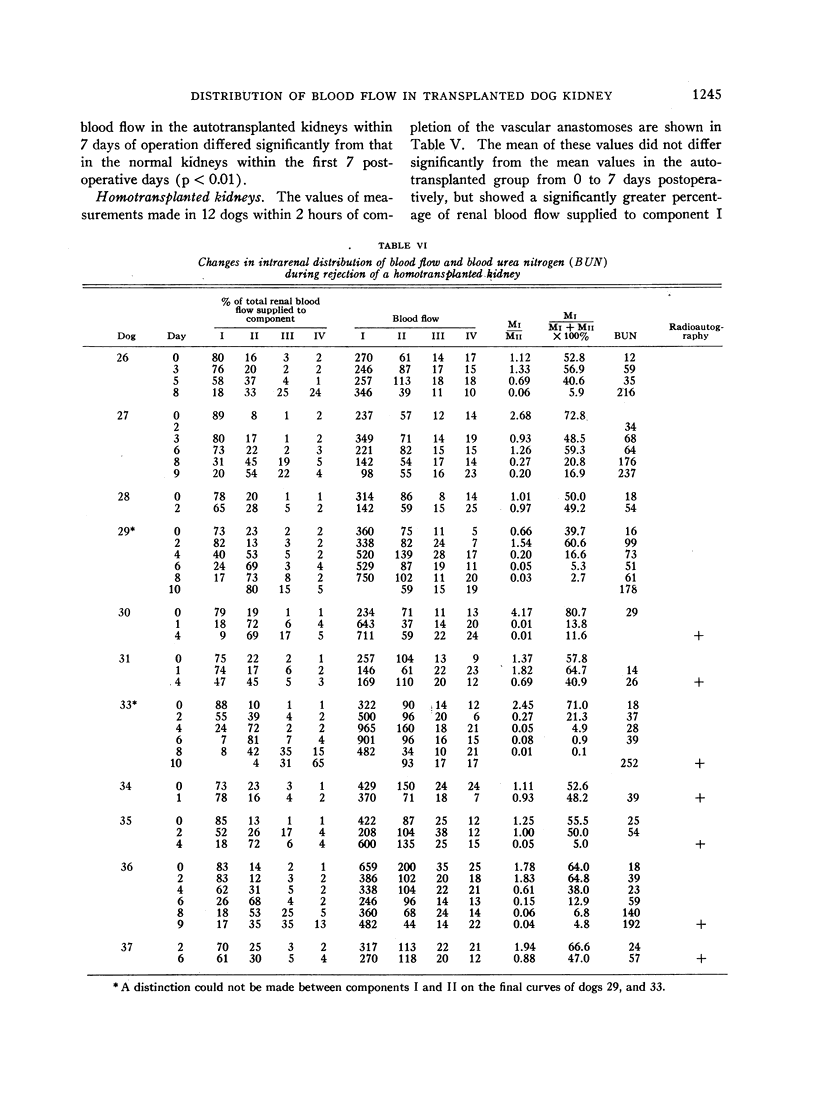
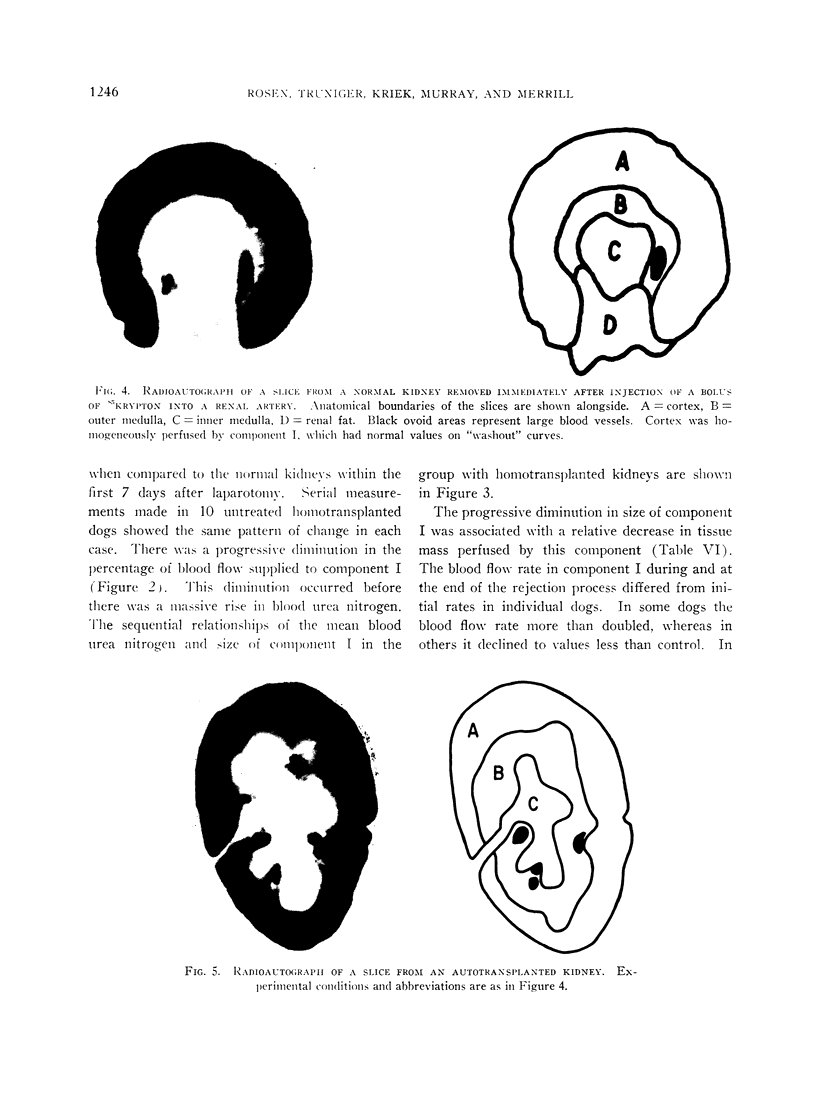
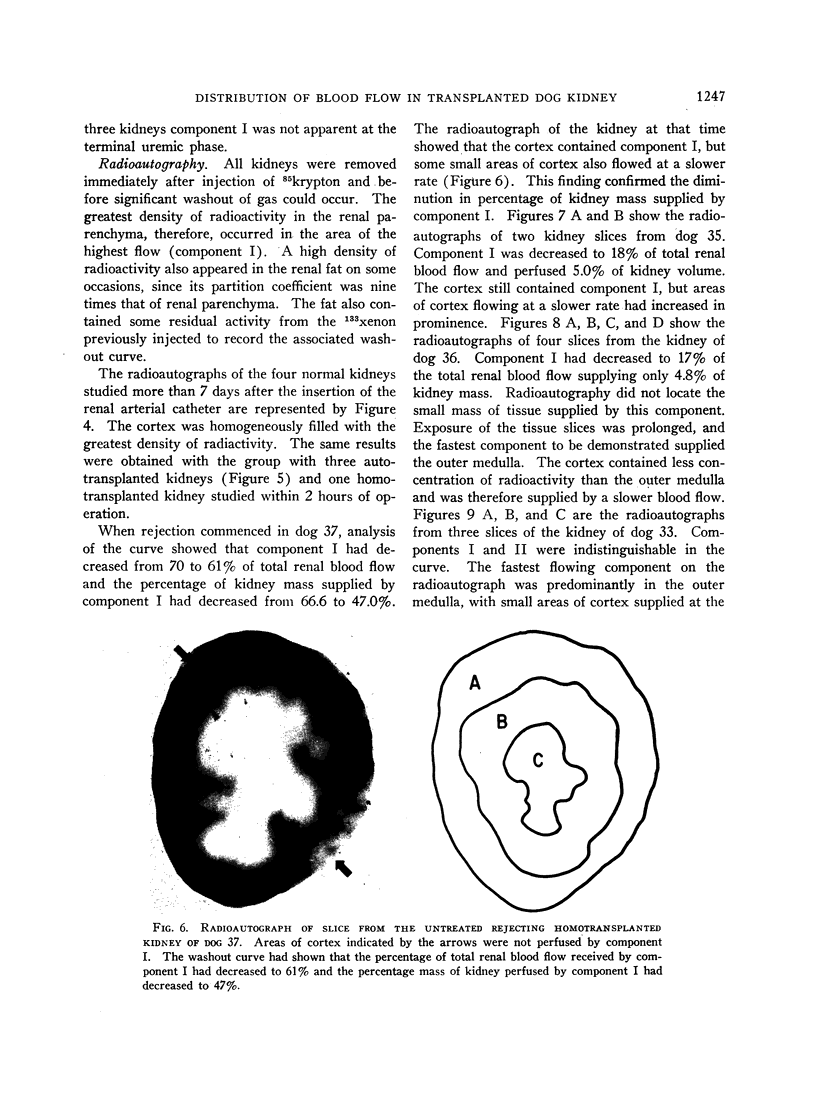

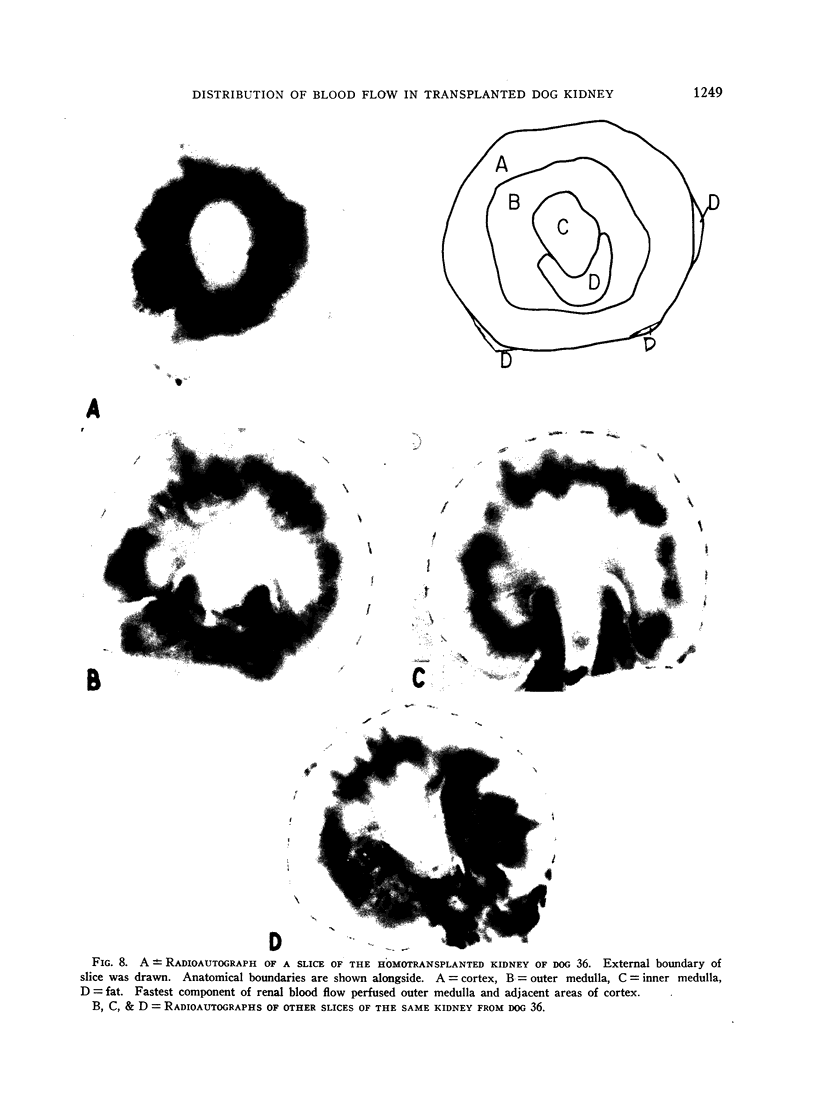
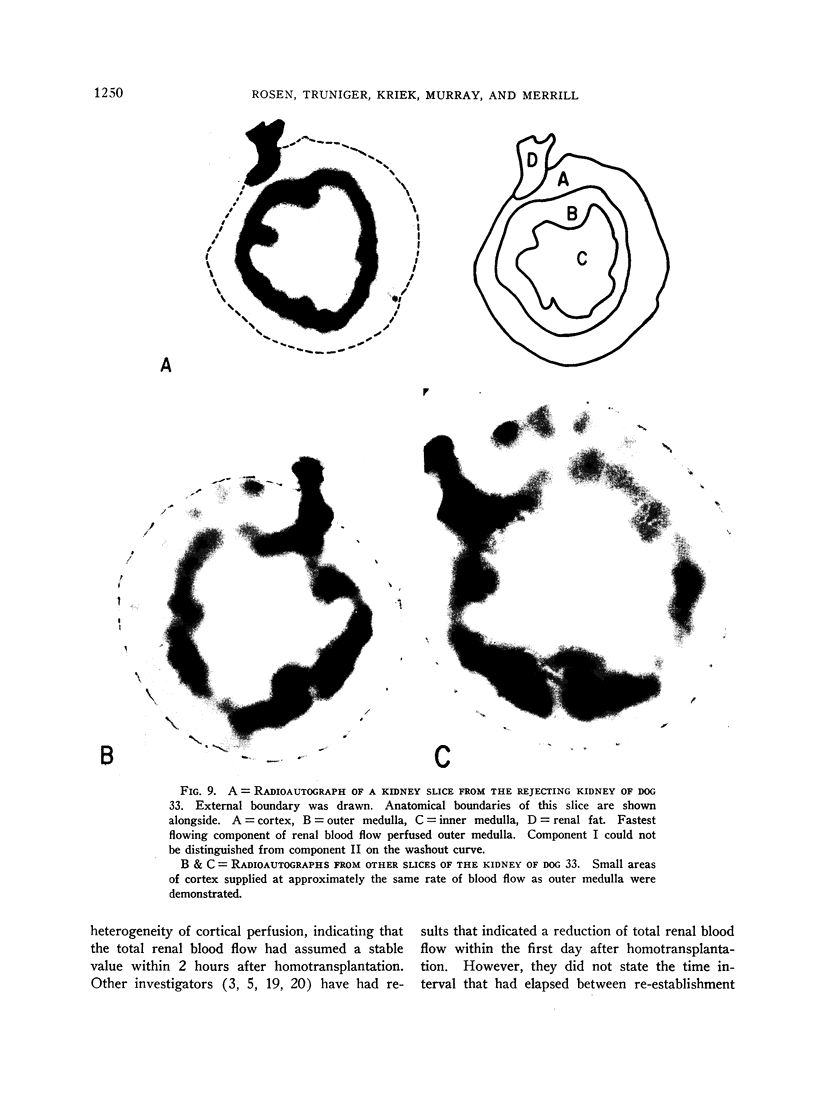
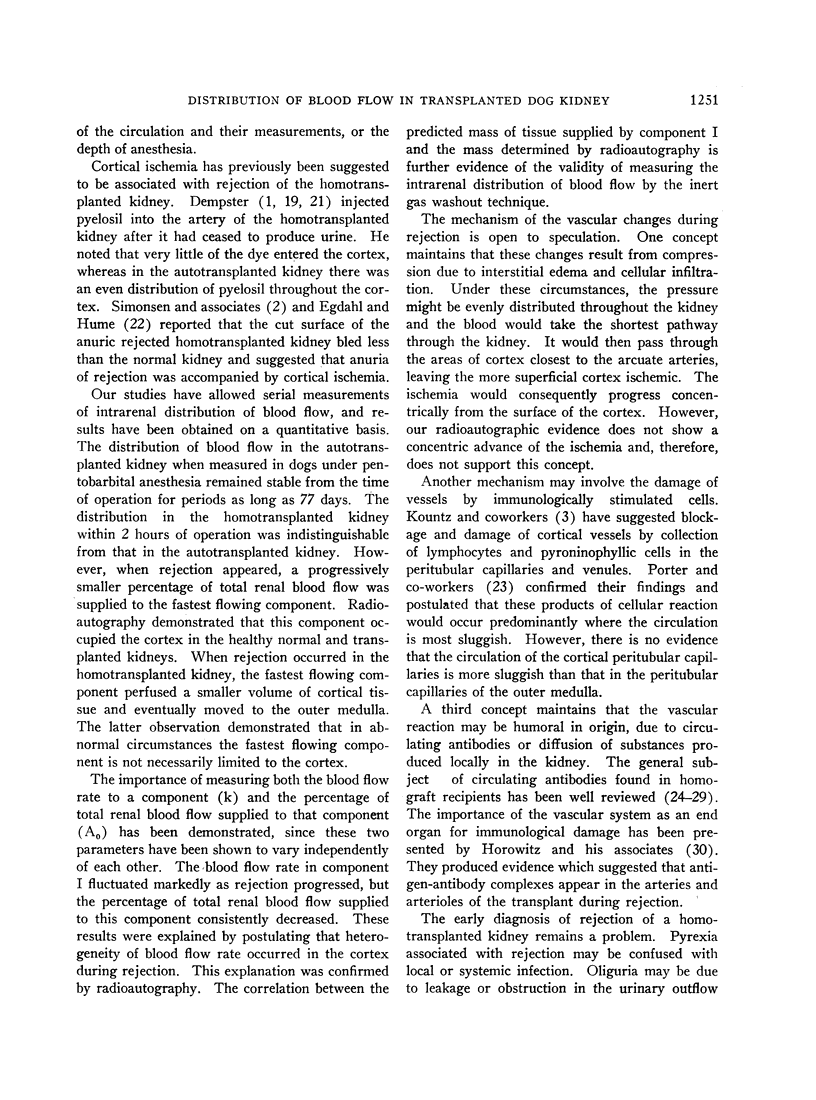
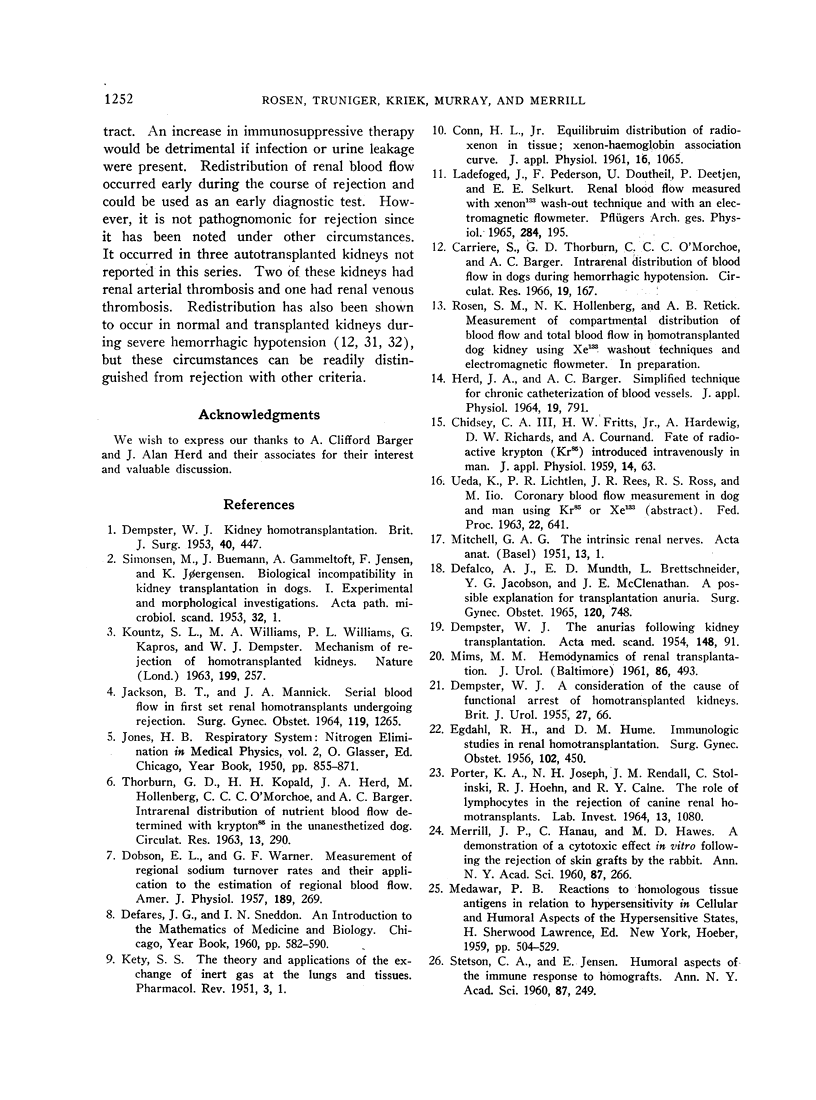
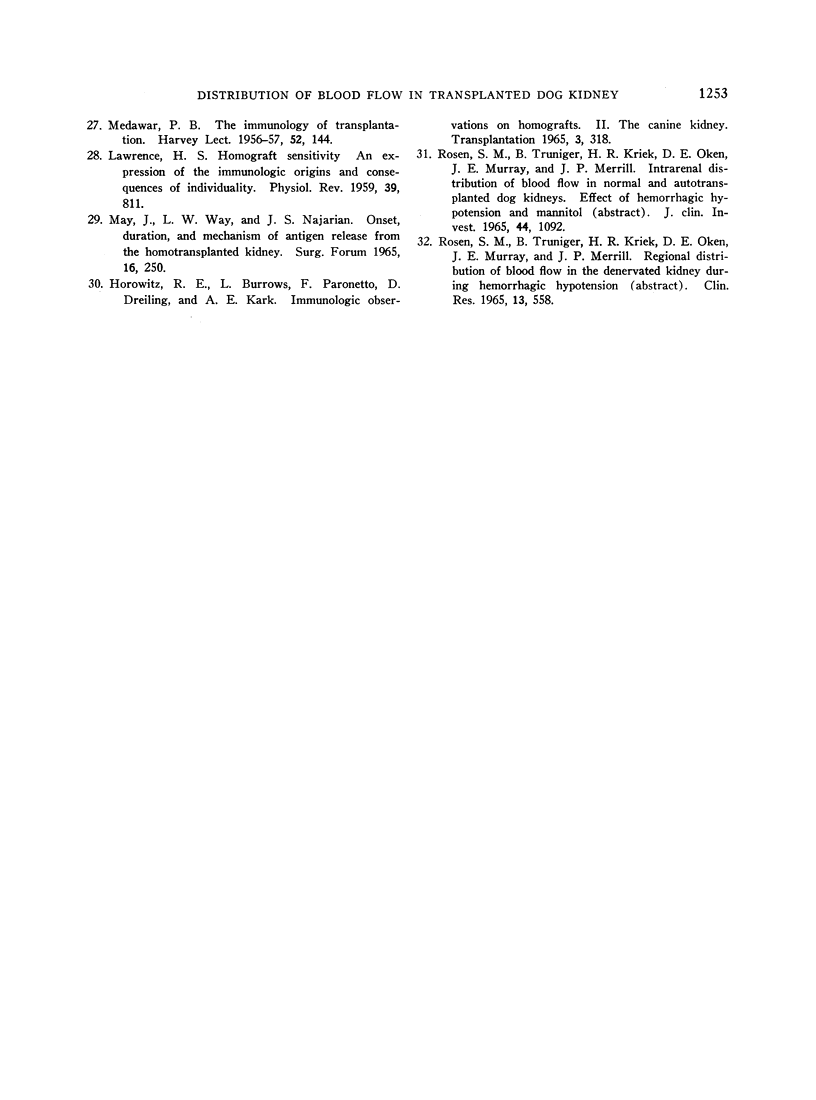
Images in this article
Selected References
These references are in PubMed. This may not be the complete list of references from this article.
- CHIDSEY C. A., 3rd, FRITTS H. W., Jr, HARDEWIG A., RICHARDS D. W., COURNAND A. Fate of radioactive kryton (Kr85) introduced intravenously in man. J Appl Physiol. 1959 Jan;14(1):63–66. doi: 10.1152/jappl.1959.14.1.63. [DOI] [PubMed] [Google Scholar]
- CONN H. L., Jr Equilibrium distribution of radioxenon in tissue: xenon-hemoglobin association curve. J Appl Physiol. 1961 Nov;16:1065–1070. doi: 10.1152/jappl.1961.16.6.1065. [DOI] [PubMed] [Google Scholar]
- DEFALCO A. J., MUNDTH E. D., BRETTSCHNEIDER L., JACOBSON Y. G., MCCLENATHAN J. E. A POSSIBLE EXPLANTATION ANURIA. Surg Gynecol Obstet. 1965 Apr;120:748–756. [PubMed] [Google Scholar]
- DEMPSTER W. J. A consideration of the cause of functional arrest of homotransplanted kidneys. Br J Urol. 1955 Mar;27(1):66–86. doi: 10.1111/j.1464-410x.1955.tb03445.x. [DOI] [PubMed] [Google Scholar]
- DEMPSTER W. J. Kidney homotransplantation. Br J Surg. 1953 Mar;40(163):447–465. doi: 10.1002/bjs.18004016309. [DOI] [PubMed] [Google Scholar]
- DEMPSTER W. J. The anurias following kidney transplantation. Acta Med Scand. 1954;148(2):91–100. doi: 10.1111/j.0954-6820.1954.tb01703.x. [DOI] [PubMed] [Google Scholar]
- DOBSON E. L., WARNER G. F. Measurement of regional sodium turnover rates and their application to the estimation of regional blood flow. Am J Physiol. 1957 May;189(2):269–276. doi: 10.1152/ajplegacy.1957.189.2.269. [DOI] [PubMed] [Google Scholar]
- EGDAHL R. H., HUME D. M. Immunologic studies in renal homotransplantation. Surg Gynecol Obstet. 1956 Apr;102(4):450–462. [PubMed] [Google Scholar]
- HERD J. A., BARGER A. C. SIMPLIFIED TECHNIQUE FOR CHRONIC CATHETERIZATION OF BLOOD VESSELS. J Appl Physiol. 1964 Jul;19:791–792. doi: 10.1152/jappl.1964.19.4.791. [DOI] [PubMed] [Google Scholar]
- HOROWITZ R. E., BURROWS L., PARONETTO F., DREILLING D., KARK A. E. IMMUNOLOGIC OBSERVATIONS ON HOMOGRAFTS. II. THE CANINE KIDNEY. Transplantation. 1965 May;3:318–325. doi: 10.1097/00007890-196505000-00002. [DOI] [PubMed] [Google Scholar]
- JACKSON B. T., MANNICK J. A. SERIAL BLOOD FLOW IN FIRST SET RENAL HOMOTRANSPLANTS UNDERGOING REJECTION. Surg Gynecol Obstet. 1964 Dec;119:1265–1270. [PubMed] [Google Scholar]
- KETY S. S. The theory and applications of the exchange of inert gas at the lungs and tissues. Pharmacol Rev. 1951 Mar;3(1):1–41. [PubMed] [Google Scholar]
- KOUNTZ S. L., WILLIAMS M. A., WILLIAMS P. L., KAPROS C., DEMPSTER W. J. MECHANISM OF REJECTION OF HOMOTRANSPLANTED KIDNEYS. Nature. 1963 Jul 20;199:257–260. doi: 10.1038/199257a0. [DOI] [PubMed] [Google Scholar]
- LAWRENCE H. S. Homograft sensitivity. An expression of the immunologic origins and consequences of individuality. Physiol Rev. 1959 Oct;39:811–859. doi: 10.1152/physrev.1959.39.4.811. [DOI] [PubMed] [Google Scholar]
- Ladefoged J., Pedersen F., Doutheil U., Deetjen P., Selkurt E. E. Renal blood flow measured with Xenon-133 wash-out technique and with an electromagnetic flowmeter. Pflugers Arch Gesamte Physiol Menschen Tiere. 1965 Jun 15;284(3):195–200. doi: 10.1007/BF00362441. [DOI] [PubMed] [Google Scholar]
- MEDAWAR P. B. The immunology of transplantation. Harvey Lect. 1956;(SERIES):144–176. [PubMed] [Google Scholar]
- MIMS M. M. Hemodynamics of renal transplantation. J Urol. 1961 Nov;86:493–500. doi: 10.1016/S0022-5347(17)65204-2. [DOI] [PubMed] [Google Scholar]
- MITCHELL G. A. G. The intrinsic renal nerves. Acta Anat (Basel) 1951;13(1-2):1–15. doi: 10.1159/000140561. [DOI] [PubMed] [Google Scholar]
- May J., Way L. W., Najarian J. S. Onset, duration, and mechanism of antigen release from the homotransplanted kidney. Surg Forum. 1965;16:250–251. [PubMed] [Google Scholar]
- PORTER K. A., JOSEPH N. H., RENDALL J. M., STOLINSKI C., HOEHN R. J., CALNE R. Y. THE ROLE OF LYMPHOCYTES IN THE REJECTION OF CANINE RENAL HOMOTRANSPLANTS. Lab Invest. 1964 Sep;13:1080–1098. [PubMed] [Google Scholar]
- THORBURN G. D., KOPALD H. H., HERD J. A., HOLLENBERG M., O'MORCHOE C. C., BARGER A. C. INTRARENAL DISTRIBUTION OF NUTRIENT BLOOD FLOW DETERMINED WITH KRYPTON 85 IN THE UNANESTHETIZED DOG. Circ Res. 1963 Oct;13:290–307. doi: 10.1161/01.res.13.4.290. [DOI] [PubMed] [Google Scholar]



